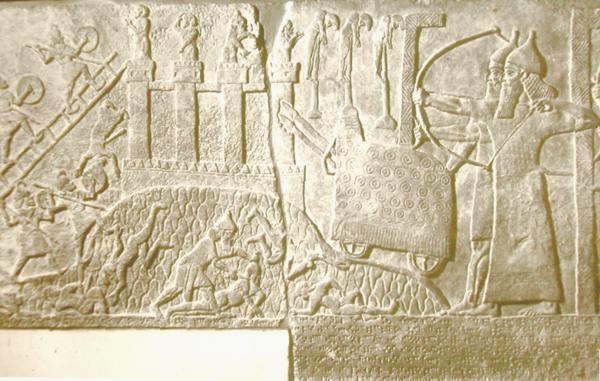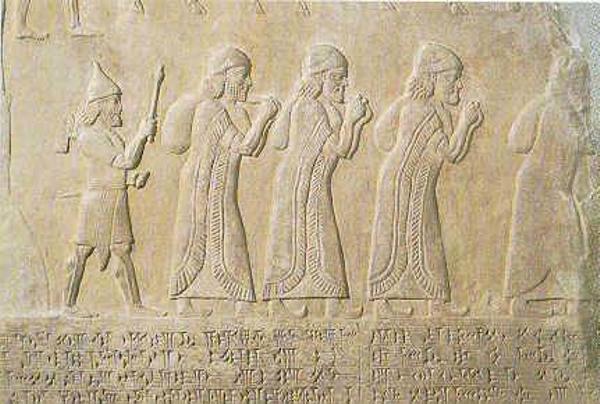





As was the custom of Assyrian kings, Tiglath-Pileser III inscribed his annals in word and picture on stone slabs that lined the palace walls. In the closeup of the example above, the cuneiform inscription of the text of the annals can be seen. The location of the battle scene is not known for sure. The prisoners in the lower scene are believed to be from the city of Astartu in Jordan.
From Tiglath-pileser III (744-727) Annalistic Inscription, year unknown. Translated by Luckenbill, AR,I, sect. 772.
I received tribute from Kushtashpi of Commagene (Kummuhu), Rezon (Ra-i-a-nu) of Damascus (Sa-im erisu). Menahem of Samaria (Me-ni-i-im-me Sa-me-ri-na-a-a), Hiram (i-ru-um-mu) of Tyre, Sibitti-bi?li of Byblos, Urikki of Qu?e, Pisiris of Carchemish, I?nil of Hamath, Panammu of Sam?al, Tarulara of Gurgum, Sulumal of Militene, Dadilu of Kaska, Uassurme of Tabal, Ushhitti of Tuna, Urballa of Tuhana, Tuhamme of Ishtunda, Urimme of Hubishna (and) Zabibe , queesn of Arabia, (to wit) gold, silver, tin, iron, elephant-hides, ivory, linen garments with multi-colored trimmings, blue-dyed wool, purple-dyed wool, ebony-wood, boxwood-wood, whatever was precious (enough for a) royal treasure; also lambs whose stretched hides were dyed purple, (and) wild birds whose spread out wings were dyed blue, (furthermore) horses, mules, large and small cattle, (male) camels female camels with their foals.